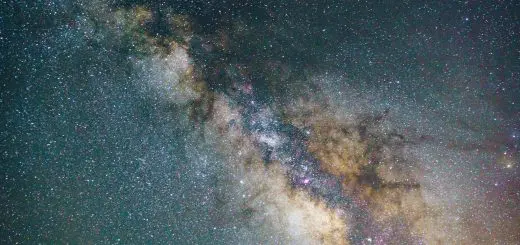How Climate Change Affects Biodiversity: A Deep Dive

Looking for more amazing products? Check out our online store and explore our collection here! Happy shopping!
Before diving in, please note: This post is for informational purposes only. If you’d like to know more about how we approach topics, feel free to check out our friendly Disclaimer Page.
Hey there, amazing readers! 
We’re committed to delivering quality posts, and your support (even just sticking around despite the ads) means everything to us. So, bear with us, and thanks for helping us keep the good vibes rolling. Now, on to the fun stuff!
TRANSLATE BUTTON AT THE END OF THE ARTICLE
Introduction to Climate Change and Biodiversity
Climate change, a pressing issue of our time, poses a significant threat to the delicate balance of biodiversity on our planet.
Biodiversity refers to the variety of life forms on Earth, encompassing plants, animals, and microorganisms, as well as the ecosystems in which they exist.
The interconnected web of life that biodiversity represents is crucial for maintaining a healthy and functioning environment.
However, as the Earth’s climate continues to change at an unprecedented rate due to human activities, the impact on biodiversity is becoming increasingly evident.
Understanding how climate change affects biodiversity is essential in order to develop effective conservation strategies and mitigate its negative consequences.
Understanding the Impact of Rising Temperatures
One of the most noticeable effects of climate change on biodiversity is the rise in global temperatures.
Warmer temperatures can directly impact numerous species, especially those that are sensitive to changes in climate.
For example, polar bears, which rely on sea ice for hunting, are facing habitat loss as the ice melts due to rising temperatures.
Similarly, coral reefs are at risk due to increased ocean temperatures, leading to coral bleaching events that devastate these vital ecosystems.
The impact of rising temperatures extends beyond individual species, affecting entire ecosystems and the services they provide.
The Role of Extreme Weather Events
Climate change is also associated with an increase in the frequency and intensity of extreme weather events such as hurricanes, droughts, floods, and wildfires.
These events can have devastating effects on biodiversity by causing habitat destruction, altering ecosystems, and disrupting the natural balance of species.
For example, wildfires can destroy vast areas of forests, leading to the loss of habitat for countless plant and animal species.
Similarly, hurricanes can uproot trees, disrupt food chains, and alter landscapes, affecting the survival of numerous species.
The cumulative impact of these extreme weather events can have long-lasting repercussions on biodiversity.
Ocean Acidification and Marine Life
Another consequence of climate change is ocean acidification, which occurs as the oceans absorb excess carbon dioxide from the atmosphere.
This acidification has a detrimental effect on marine life, particularly on organisms with calcium carbonate shells such as corals, shellfish, and plankton.
As the pH of the oceans decreases, it becomes more challenging for these species to build and maintain their shells, leading to population declines and disruptions in marine food chains.
The cascading effects of ocean acidification on marine biodiversity underscore the interconnected nature of ecosystems and the far-reaching consequences of climate change.
Habitat Loss and Fragmentation
Climate change exacerbates habitat loss and fragmentation, making it difficult for many species to find suitable areas to live and thrive.
As temperatures shift, habitats may become unsuitable for certain species, leading to population declines or local extinctions.
Additionally, human activities such as deforestation and urbanization further fragment habitats, isolating populations and reducing genetic diversity.
This fragmentation hinders the ability of species to adapt to changing environmental conditions and increases their vulnerability to extinction.
Protecting and restoring habitats is crucial for maintaining biodiversity in the face of ongoing climate change.
Disruption of Ecosystem Services
Ecosystem services, the benefits that humans derive from healthy ecosystems, are also at risk due to climate change-induced disruptions in biodiversity.
Ecosystem services include providing clean air and water, pollinating crops, regulating climate, and supporting nutrient cycling.
However, as biodiversity declines, the ability of ecosystems to provide these services diminishes, impacting human well-being and livelihoods.
For example, the decline in pollinators such as bees and butterflies due to climate change threatens crop yields and food security.
Recognizing the importance of biodiversity in maintaining ecosystem services is essential for ensuring the sustainability of our planet.
Shifts in Species Distribution
Climate change is causing shifts in the distribution of species as they seek out suitable habitats in response to changing environmental conditions.
Many species are moving towards the poles or to higher elevations in search of cooler temperatures, altering the composition of ecosystems and potentially leading to competition with native species.
These shifts can disrupt established ecological relationships, trigger invasive species introductions, and create challenges for conservation efforts.
Monitoring and managing these changes in species distribution are critical for preserving biodiversity and adaptive capacity in a changing climate.
Threats to Endangered Species
Endangered species are particularly vulnerable to the impacts of climate change, as they often have limited ranges, specialized habitats, and low population numbers.
Climate change can exacerbate existing threats such as habitat loss, pollution, and poaching, pushing endangered species closer to extinction.
For example, the polar bear, listed as vulnerable on the IUCN Red List, is facing habitat loss and food scarcity due to melting sea ice caused by climate change.
Protecting endangered species from the effects of climate change requires targeted conservation efforts, habitat restoration, and collaborative initiatives to address multiple stressors.
Changes in Plant and Animal Behavior
Climate change is altering the behavior of plants and animals as they respond to shifting environmental conditions.
For example, migratory birds are changing their migration patterns in response to warmer temperatures, shifting the timing of nesting, breeding, and feeding.
Plants are flowering earlier in the year, and animals are hibernating later, disrupting the synchrony of ecological interactions.
These changes in behavior can have cascading effects on food webs, predator-prey dynamics, and ecosystem functioning.
Understanding and predicting how climate change influences plant and animal behavior is essential for managing biodiversity in a rapidly changing world.
Implications for Food Security
Climate change poses significant implications for global food security as it disrupts agricultural systems, reduces crop yields, and affects the availability of nutritious food.
Changes in temperature and precipitation patterns can lead to crop failures, pests and diseases outbreaks, and soil degradation, impacting the livelihoods of farmers and food production.
Biodiversity loss further exacerbates these challenges by reducing the resilience of agroecosystems and limiting the genetic diversity of crops and livestock.
Enhancing the resilience of food systems, promoting sustainable agriculture practices, and conserving biodiversity are crucial for ensuring food security in the face of climate change.
Mitigation Strategies and Conservation Efforts
Addressing the impacts of climate change on biodiversity requires a multi-faceted approach that combines mitigation strategies to reduce greenhouse gas emissions and conservation efforts to protect and restore ecosystems.
Mitigation strategies include transitioning to renewable energy sources, improving energy efficiency, and reducing deforestation to lower carbon emissions.
Conservation efforts involve establishing protected areas, restoring degraded habitats, and implementing species-specific recovery plans.
Collaborative initiatives between governments, scientists, conservation organizations, and local communities are essential for implementing effective mitigation and conservation measures to safeguard biodiversity in a changing climate.
Conclusion: Addressing the Challenges Ahead
In conclusion, climate change poses significant challenges to biodiversity, threatening the intricate web of life that sustains ecosystems and supports human well-being.
Understanding the complex interactions between climate change and biodiversity is crucial for developing effective strategies to mitigate its impacts.
By addressing the root causes of climate change, protecting and restoring habitats, and promoting sustainable practices, we can work towards preserving biodiversity for future generations.
It is imperative that we act swiftly and decisively to address the challenges ahead and ensure a sustainable future for all life on Earth.
Let us all strive to be stewards of biodiversity and champions of conservation in the face of a changing climate.

The Enlightenment Journey is a remarkable collection of writings authored by a distinguished group of experts in the fields of spirituality, new age, and esoteric knowledge.
This anthology features a diverse assembly of well-experienced authors who bring their profound insights and credible perspectives to the forefront.
Each contributor possesses a wealth of knowledge and wisdom, making them authorities in their respective domains.
Together, they offer readers a transformative journey into the realms of spiritual growth, self-discovery, and esoteric enlightenment.
The Enlightenment Journey is a testament to the collective expertise of these luminaries, providing readers with a rich tapestry of ideas and information to illuminate their spiritual path.
Our Diverse Expertise
While our primary focus is on spirituality and esotericism, we are equally passionate about exploring a wide range of other topics and niches 

To ensure we provide the most accurate and valuable insights, we collaborate with trusted experts in their respective domains 
Our blog originally focused on spirituality and metaphysics, but we’ve since expanded to cover a wide range of niches. Don’t worry—we continue to publish a lot of articles on spirituality! Frequently visit our blog to explore our diverse content and stay tuned for more insightful reads.
Hey there, amazing reader! 
Check out our store here and take a peek at some of our featured products below! Thanks for being awesome!











